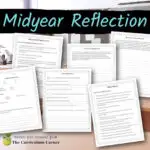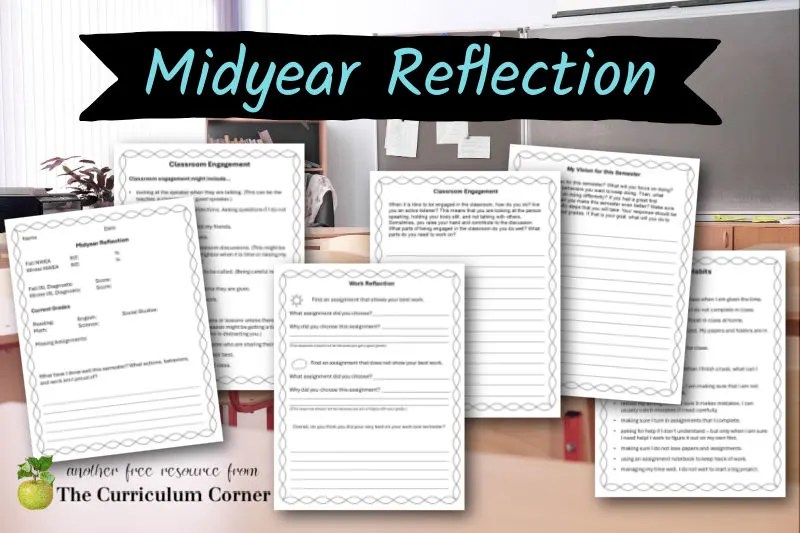This midyear reflection is designed to help your students look back at their growth and needed areas of improvement as the new semester begins.
As the second semester begins, take the time for a midyear reflection with your students.
This resource contains ideas and instructions to help you get started.
This is another free resource for teachers and homeschool families from The Curriculum Corner.
Ideas for implementation
Begin this semester with an opportunity for students to review the past semester and how they have grown.
Reflection activities will give your students a chance to pause and identify where they excel or could work on improvement. The goal is to help students become focused on the new semester while also promoting accountability.
During this process, students will be looking at the connection between their effort and the outcome.
Too often, assignments are handed back and they then go into the trash or shoved in a backpack. Teachers might write comments and explanations but so often, students do not look at these.
I am taking the first two days after break to help students learn how to look at the comments and reflect on their work. I have kept graded work for all of December. I have also tried to write more detailed comments on the work. We are going to begin our semester by first passing back the papers – I know this will be a little chaotic with the excitement after break and so many students moving around.
Next, I am going to give students the page titled “Work Review.” We will go through these steps together. Students will sort their papers into a stack that shows their best work and a stack that shows areas for improvement. You might choose to have students sort this second stack into a needs improvement and ok/good work pile.
Have students choose three pieces of work from the best work and the needs improvement stacks. Students will then put a post-it on each. On the post-it, they should make a comment about something that as really good or something they could have done better. The “Work Habits” anchor chart can help students get started. Before this step, I am going to choose a piece of work from another class that fits each category. I will give students an example of how this should be done using those examples.
Another part of this process will be for students to reflect on their classroom engagement and work habits. Students can use the anchor charts to help them explain their strengths and weaknesses.
Here is an example of what a reflection might look like:
In humanities, I have areas I did well in and spots I can work to improve on. When writing, my ideas were well organized. However, I often forgot to use the correct capitalization. My goal for this semester is to remember to go back and check my work before I turn it in. My NWEA reading score improved by three points which means I met my goal. My scores show that I need to work to improve my vocabulary. I can do this by working on Scholastic WORD for 30 minutes, twice a week.
This reflection download:
There are different options along with different anchor charts included in the download.
You can use the pieces that fit your students best.
The anchor charts can be shared as a document with students or enlarged to make a poster.
You might include the writing pages in a student data binder.
At the end of the semester, students can return to the page to see if they accomplished all they set out to do.
You can download this midyear reflection set here:
This resource is intended to be free for teachers and homeschool families. You may copy and share this resource in your school. You may not sell or modify and sell this resource in any format.


